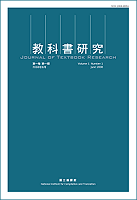|
Volume 15 Number 2
Editors: Li-Hua Chen Mei-Hui Liu
|

|
|
|
|
|
|
|
Articles
Abstract | PDF Full Text | How to Cite
The study on the process of paiwan-based teaching material development in pingtung county
Abstract
In 2014, the indigenous curriculum development center in Pingtung County initiated the development of Paiwan-based teaching materials. The study explored this development process through data analysis and interviews. The research results include the following: 1. The development of teaching materials depends on a comprehensive indigenous-based curriculum; 2. For every field, the teaching material was developed through some steps such as designing, pilot teaching, reviewing, and modifying; 3. Paiwan-based teaching materials exhibit the following three features: the content and organization of these materials follow textbooks released by private publishers, the content highlights the features of Paiwanese and mainstream cultures, and the content is designed to impart knowledge commensurate with that covered in compulsory education; 4. The teaching materials cover historical forces, competitive discourses, interpersonal interactions, and life histories. Finally, this study puts forward some implications for further development of indigenous-based curriculum.
APA Format
Yang, J.-Y. (2022). The study on the process of Paiwan-based teaching material development in Pingtung County. Journal of Textbook Research, 15(2), 1-29.
|
|
|
Abstract | PDF Full Text | How to Cite
Atayal narratives and a culturally responsive curriculum at an indigenous elementary school in northern taiwan: to reflect the appropriateness of the cultural content
Abstract
This qualitative study explored the cultural content in a culturally responsive curriculum (CRC) used at an Atayal elementary school in northern Taiwan. The principles underlying the formulation of the CRC were also investigated. The CRC’s theme was “becoming qualified Atayal men and women” and it was based on an integrated curriculum framework and was designed to combat the stereotypes portrayed in a variety of cultural vehicles. Consonant with the socialization process of Atayal children, Atayal narratives were selected and organized sequentially based on cultural ideas such as people on the land, people with the tribe, and people in nature to cover culturally relevant concepts, events, and facts. To help students view the world from an indigenous-centered perspective, the CRC had guided students to read tribal narratives, compare cultures with each other, acquire scientific knowledge from ethnic culture, and experience cultural activities. The findings indicated that cultural fluidity and Atayal teachers’ beliefs are key elements in CRC implementation and suggested that they should be deliberated and adjusted appropriately in time and through the curriculum action.
APA Format
Jian, L.-P. (2022). Atayal narratives and a culturally responsive curriculum at an indigenous elementary school in northern Taiwan: To reflect the appropriateness of the cultural content. Journal of Textbook Research, 15(2), 31-75.
|
|
|
Abstract | PDF Full Text | How to Cite
Compiling a list of middle school academic vocabulary from textbooks
Abstract
Academic vocabulary is a crucial communication tool in academia. Academic vocabularies are supplementary vocabularies used to define technical terms. The same academic vocabulary might appear in various disciplines, but the frequency will vary. This study compiled an academic vocabulary list using textbooks from the Grade 1-9 Curriculum Guidelines for seven disciplines-mathematics, physics/chemistry, biology, geoscience, geography, history, and civics. After segmenting the corpus, removing the fundamental terms, and filtering by indicators such as dispersions, we compiled a “Middle School Academic Vocabulary List” with 779 vocabulary words. The proportion of academic vocabulary occurring in each unit of mathematics was significantly different from that of other disciplines, despite considering cross-discipline features. The cluster analysis was derived from the following five categories: historical and citizen, biology and geography, natural science, and two groups reflecting a higher and lower proportion of occurrence units. Finally, the study examined the characteristics of academic vocabulary and reflected the construction procedure for an academic vocabulary list for middle school students. The study also gives suggestions for future research and teaching, as well as possible limits to the research.
APA Format
Li, Y.-L., Zhong, H.-R., & Wu, C.-J. (2022). Compiling a list of middle school academic vocabulary from textbooks. Journal of Textbook Research, 15(2), 77-111.
|
|
|
Froum
PDF Full Text | How to Cite
APA Format
Liu, M.-H., Chen, L.-H., Chu, C.-W., Ho, S.-J., Wu, Y.-H., Chou, W.-Y., Chang, T.-C., & Perng, T.-L. (2022). Forum: Sustainable development goals for elementary and secondary school textbooks/Current status and developmental trends in teacher-designed materials. Journal of Textbook Research, 15(2), 113-146.
|
|
|
Book Review
PDF Full Text | How to Cite
APA Format
Sung, C.-C. (2022). Review of the book Overseas textbook system research report, by Japan Textbook Research Center. Journal of Textbook Research, 15(2), 147-158.
|
|
|
Manuscripts and all editorial correspondence should be sent to:
4F, 179 Sec. 1, Heping E. Rd., Daan Dist., Taipei City 106011, Taiwan (R.O.C.)
E-mail:
ej@mail.naer.edu.tw










